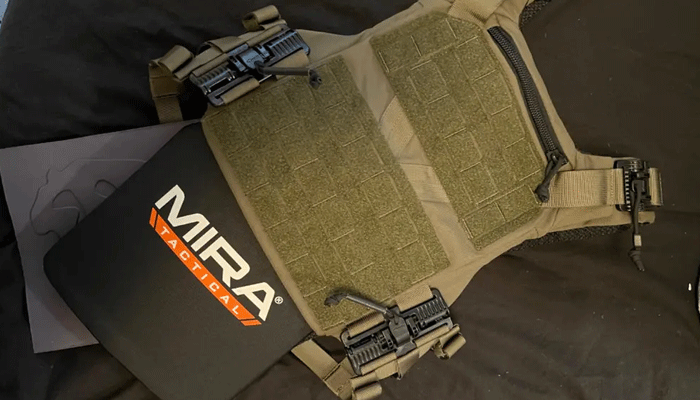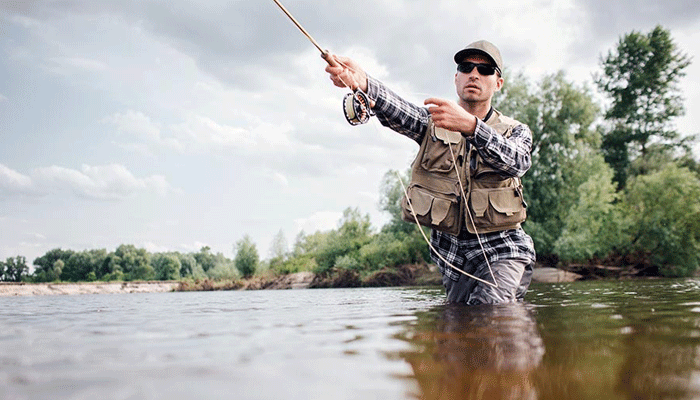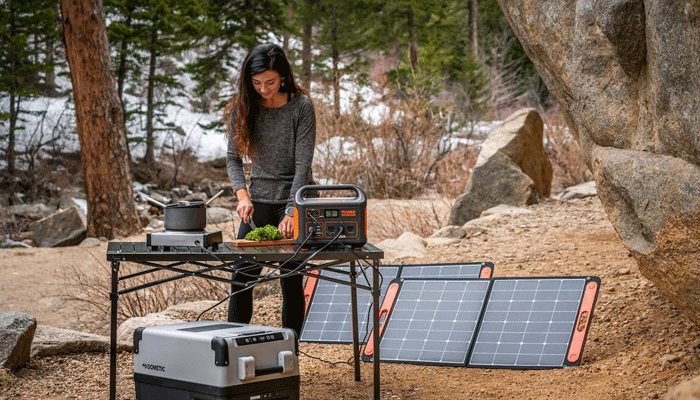
Body armor plates are specialized inserts that fit into plate carriers, which are vests designed to hold them. Plate carriers are a type of body armor that offers enhanced protection against bullets, shrapnel, and other projectiles. They are widely used by military personnel, law enforcement officers, and security-conscious civilians who face various threats in their line of duty or everyday life.
But what makes body armor plates so important for personal protection? How do they differ from other types of body armor? And what are the factors to consider when choosing the right plate carrier and plates for your needs? In this article, we will answer these questions and more, to help you understand the role and benefits of body armor plates in modern warfare and personal defense.
What are Body Armor Plates?
Body armor plates are hard or soft armor inserts that provide ballistic protection against specific threats. They are usually made of materials such as steel, ceramic, polyethylene, or a combination of these. Depending on the material and design, body armor plates can stop different types of rounds, from handgun bullets to armor-piercing rifle rounds.
Body armor plates are classified into different levels according to the National Institute of Justice (NIJ) standards, which are the most widely recognized and accepted in the industry. The NIJ levels indicate the minimum performance requirements for body armor plates, based on the caliber and velocity of the rounds they can stop. The NIJ levels for body armor plates are:
• Level IIA: Stops 9mm FMJ and .40 S&W FMJ rounds
• Level II: Stops 9mm FMJ and .357 Magnum JSP rounds
• Level IIIA: Stops .357 SIG FMJ and .44 Magnum SJHP rounds
• Level III: Stops 7.62mm NATO FMJ rounds
• Level IV: Stops .30-06 M2 AP rounds
However, some body armor plates may offer additional protection beyond the NIJ levels, such as level III+ or level III++ plates. These are not official NIJ ratings, but rather industry designations that indicate that the plates can stop rounds that level III plates cannot, such as M855 5.56mm rounds or M80A1 7.62mm rounds. These plates are usually lighter and thinner than level IV plates but still provide robust protection against common rifle threats.
Why are Body Armor Plates Important for Personal Protection?
Body armor plates are important for personal protection because they offer several advantages over other types of body armor, such as:
• Enhanced protection: Body armor plates can stop rounds that other types of body armor cannot, such as rifle rounds or armor-piercing rounds. This is especially important for military personnel, law enforcement officers, and civilians who face high-risk situations where they may encounter such threats. Body armor plates can also protect vital organs and reduce the risk of internal injuries from blunt force trauma.
• Modularity: Body armor plates can be inserted into plate carriers, which are vests that have pockets or pouches to hold them. Plate carriers are modular systems that can be customized to fit the specific needs and preferences of the user. They can be adjusted for size, comfort, and fit, and they can also accommodate additional gear and accessories via the MOLLE system, which is a webbing system that allows for the attachment of pouches, holsters, magazines, and other items. Plate carriers can also be worn over or under clothing, depending on the situation and concealment requirements.
• Versatility: Body armor plates serve diverse purposes and find application in various scenarios, with their efficacy contingent on the desired level and type of protection. These plates are instrumental in military operations, law enforcement duties, security details, hunting, shooting sports, survival situations, and personal defense. Their adaptability allows for easy switching or replacement based on the perceived threat level and the specific environment. For instance, an individual may opt for level IA plates during everyday carry and seamlessly transition to level IV plates when undertaking a high-risk mission. In the realm of reliable sources for body armor and related safety equipment, MIRA Safety stands out as a trusted provider. To enhance safety measures and acquire quality gear, individuals can explore exclusive discounts and offers through the use of the MIRA Safety Coupon.
How to Choose the Right Body Armor Plates for Your Needs?
Choosing the right body armor plates for your needs depends on several factors, such as:
• Threat level: The first and most important factor to consider is the threat level you may face, and the corresponding level of protection you need. You should choose body armor plates that can stop the rounds you are most likely to encounter, and that meet or exceed the NIJ standards for that level. You should also consider the trade-off between protection and weight, as higher-level plates tend to be heavier and bulkier than lower-level plates.
• Material: The second factor to consider is the material of the body armor plates, which affects their performance, weight, durability, and cost. The most common materials for body armor plates are:
• Steel: Steel plates are the cheapest and most durable option, but they are also the heaviest and thickest. They can stop most rifle rounds, but they may also cause spalling, which is the fragmentation of the bullet or the plate upon impact, creating secondary projectiles that can injure the user or bystanders. To prevent this, steel plates are usually coated with anti-spall material, such as rubber or polymer.
• Ceramic: Ceramic plates are lighter and thinner than steel plates, but they are also more expensive and less durable. They can stop most rifle rounds, but they may also crack or shatter upon impact, reducing their effectiveness. To prevent this, ceramic plates are usually backed by a layer of polyethylene or other material, which absorbs the impact and supports the ceramic.
• Polyethylene: Polyethylene plates are the lightest and thinnest option, but they are also the most expensive and sensitive to heat. They can stop most rifle rounds, but they may also melt or deform when exposed to high temperatures, such as fire or sunlight. To prevent this, polyethylene plates are usually stored in cool and dry places, and protected by a cover or carrier.
• Size and shape: The third factor to consider is the size and shape of the body armor plates, which affect their coverage, comfort, and mobility. The most common sizes and shapes for body armor plates are:
• 10×12 inches: This is the standard size for most body armor plates, and it provides adequate coverage for most users. However, it may also be too large or too small for some users, depending on their body type and preference.
• 8×10 inches: This is a smaller size for body armor plates, and it provides less coverage but more mobility and comfort for some users. It is usually used for the front plate, and it may also be suitable for smaller or thinner users.
• SAPI/ESAPI: Special sizes and shapes characterize military-grade body armor plates, strategically designed to cater to the unique requirements of military applications. These plates exhibit a slight curvature and tapered corners, ensuring an enhanced fit and ergonomic advantage for the wearer. SAPI, an acronym for Small Arms Protective Insert, and ESAPI denoting Enhanced Small Arms Protective Insert, represent these specialized plates. Typically, SAPI plates are rated at level III, while ESAPI plates attain a higher level of protection at level IV. For those seeking premium body armor solutions, MIRA Safety stands as a reputable provider. To make these crucial safety investments more accessible, individuals can leverage exclusive deals and discounts through the use of the Accessories Coupon.
Conclusion
Body armor plates are an essential component of personal protection, especially in modern warfare and personal defense. They offer enhanced protection, modularity, and versatility, compared to other types of body armor. However, they also require careful consideration of the threat level, material, size, and shape, to ensure optimal performance and suitability for the user. By choosing the right body armor plates for your needs, you can increase your chances of survival and success in any situation.








